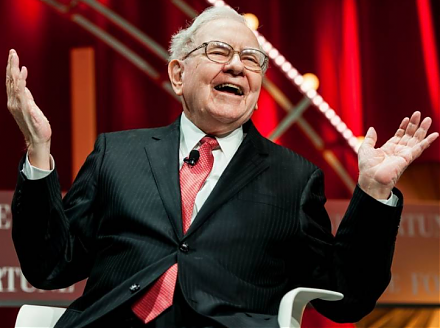

2022-10-25 11:31:00 Tue ET
mergers acquisitions corporate finance baker and wurgler managerial entrenchment jarrad harford corporate governance corporate investment corporate social responsibility rent protection ceo overconfidence board connections capital expenditures david hirshleifer ronald masulis andrei shelifer lucian bebchuk ulrike malmendier
Relative market misvaluation between the bidder and target firms drives most waves of mergers and acquisitions (Loughran and Vijh, JF 1997; Shleifer and Vishny, JFE 2003). Highly valued bidder firms are more inclined to use stock rather than cash as consideration in mergers and acquisitions (Dong, Hirshleifer, Richardson, and Wong, JFE 2006).
Acquisition announcements by firms with more anti-takeover provisions in place yield significantly lower abnormal bidder returns than acquisition announcements by firms with fewer anti-takeover provisions (Masulis, Wang, and Xie, JF 2007). In addition to the market for corporate control, Masulis et al also consider several other internal and external corporate governance mechanisms such as product market competition, CEO-chairman duality, and management quality in the form of industry-adjusted operating performance (Hart, 1983; Shleifer and Vishny, 1997; Core et al, JFE 1999; Hermalin and Weisbach, FRBNY 2003, JEL 2010; Morck, Shleifer, and Vishny, JF 1990). Firms that operate in more competitive industries make better acquisitions with greater abnormal bidder returns, as do firms that separate the positions of CEO and chairman of the board. Both Dong, Hirshleifer, Richardson, and Wong (JFE 2006) and Masulis, Wang, and Xie (JF 2007) affirm Loughran and Vijh's (JF 1997) central thesis that cash tender offers attract significantly positive abnormal bidder returns around the takeover announcement date while stock acquisitions attract significantly negative abnormal bidder returns around the takeover announcement date.
Harford, Humphery-Jenner, and Powell (JFE 2012) extend this logic and empirically find that both overpayment and deliberate target selection account for a large fraction of merger value destruction. Harford et al apply the Heckman (1979) sample selection model to find that the anti-takeover dictatorship dummy variable has a material negative impact on the probability of acquiring private targets, acquiring private targets entirely with stock, or acquiring private and even public targets with at least 5% blockholder ownership. Harford et al apply the Officer (JFE 2007) proxy premium regressions of abnormal bidder returns on the anti-takeover dictatorship dummy variable, its interaction with the proxy premium, the dummy variable for each all-stock takeover, and a unique set of control variables. All of these dummy variables and interaction term carry significantly negative coefficients, thus overpayment is another plausible explanation for merger value destruction. Harford et al apply the Healy-Palepu-Ruback (JFE 2002) regressions of industry-adjusted ROAs on the governance or entrenchment index of takeover defenses and a unique set of control variables. Ceteris paribus, greater managerial entrenchment significantly correlates with subpar operating performance. Substandard target selection, rather than mere overpayment, explains most of the shareholder value loss in mergers and acquisitions. Incumbents that are secure with more takeover defenses often seek to preserve their managerial entrenchment through deliberate target selection.
Baker, Pan, and Wurgler (JFE 2012) empirically find that the 52-week high stock prices serve as salient reference points for senior managers, executive directors, and other stakeholders in the M&A announcement period (Tversky and Kahneman, SCI 1974; Kahneman and Tversky, ECMT 1979). Ceteris paribus, a 10% increase in the 52-week high stock price correlates with a 3% increase in the takeover premium. Target-firm boards that discourage an M&A deal often emphasize that the bid is below the 52-week high stock price, while target-firm boards that encourage an M&A deal note when the bid compares favorably with the 52-week high stock price. Merger waves coincide with higher recent stock returns and stock market values. The market's 52-week high stock price relative to its current value is inversely related to the number of mergers and acquisitions. The preponderance of Baker, Pan, and Wurgler's (JFE 2012) results echoes the market-timing thesis first proposed by Shleifer and Vishny (JFE 2003).
This analytic essay cannot constitute any form of financial advice, analyst opinion, recommendation, or endorsement. We refrain from engaging in financial advisory services, and we seek to offer our analytic insights into the latest economic trends, stock market topics, investment memes, personal finance tools, and other self-help inspirations. Our proprietary alpha investment algorithmic system helps enrich our AYA fintech network platform as a new social community for stock market investors: https://ayafintech.network.
We share and circulate these informative posts and essays with hyperlinks through our blogs, podcasts, emails, social media channels, and patent specifications. Our goal is to help promote better financial literacy, inclusion, and freedom of the global general public. While we make a conscious effort to optimize our global reach, this optimization retains our current focus on the American stock market.
This free ebook, AYA Analytica, shares new economic insights, investment memes, and stock portfolio strategies through both blog posts and patent specifications on our AYA fintech network platform. AYA fintech network platform is every investor's social toolkit for profitable investment management. We can help empower stock market investors through technology, education, and social integration.
We hope you enjoy the substantive content of this essay! AYA!
Andy Yeh
Chief Financial Architect (CFA) and Financial Risk Manager (FRM)
Brass Ring International Density Enterprise (BRIDE) ©
Do you find it difficult to beat the long-term average 11% stock market return?
It took us 20+ years to design a new profitable algorithmic asset investment model and its attendant proprietary software technology with fintech patent protection in 2+ years. AYA fintech network platform serves as everyone's first aid for his or her personal stock investment portfolio. Our proprietary software technology allows each investor to leverage fintech intelligence and information without exorbitant time commitment. Our dynamic conditional alpha analysis boosts the typical win rate from 70% to 90%+.
Our new alpha model empowers members to be a wiser stock market investor with profitable alpha signals! The proprietary quantitative analysis applies the collective wisdom of Warren Buffett, George Soros, Carl Icahn, Mark Cuban, Tony Robbins, and Nobel Laureates in finance such as Robert Engle, Eugene Fama, Lars Hansen, Robert Lucas, Robert Merton, Edward Prescott, Thomas Sargent, William Sharpe, Robert Shiller, and Christopher Sims.
Follow our Brass Ring Facebook to learn more about the latest financial news and fantastic stock investment ideas: http://www.facebook.com/brassring2013.
Follow AYA Analytica financial health memo (FHM) podcast channel on YouTube: https://www.youtube.com/channel/UCvntmnacYyCmVyQ-c_qjyyQ
Free signup for stock signals: https://ayafintech.network
Mission on profitable signals: https://ayafintech.network/mission.php
Model technical descriptions: https://ayafintech.network/model.php
Blog on stock alpha signals: https://ayafintech.network/blog.php
Freemium base pricing plans: https://ayafintech.network/freemium.php
Signup for periodic updates: https://ayafintech.network/signup.php
Login for freemium benefits: https://ayafintech.network/login.php
If any of our AYA Analytica financial health memos (FHM), blog posts, ebooks, newsletters, and notifications etc, or any other form of online content curation, involves potential copyright concerns, please feel free to contact us at service@ayafintech.network so that we can remove relevant content in response to any such request within a reasonable time frame.
2018-03-19 10:37:00 Monday ET

Uber's autonomous car causes the first known pedestrian fatality from a driverless vehicle and thus sets off the alarm bell for artificial intelligence.
2018-11-03 11:36:00 Saturday ET

Apple adds fresh features to its new iPad Pro and MacBook Air in addition to its prior suite of iPhone XS, iPhone XS Max, and iPhone XR back in September 20
2024-04-30 08:28:00 Tuesday ET

Andy Yeh Alpha (AYA) fintech network platform: major milestones, key product features, and online social media services Introduction
2025-09-24 09:49:53 Wednesday ET

Stock Synopsis: With a new Python program, we use, adapt, apply, and leverage each of the mainstream Gemini Gen AI models to conduct this comprehensive fund
2019-04-19 12:35:00 Friday ET

Federal Reserve proposes to revamp post-crisis rules for U.S. banks. The current proposals would prescribe materially less strict requirements for community
2018-11-07 08:30:00 Wednesday ET

PwC releases a new study of top innovators worldwide as of November 2018. This study assesses the top 1,000 global companies that spend the most on R&D